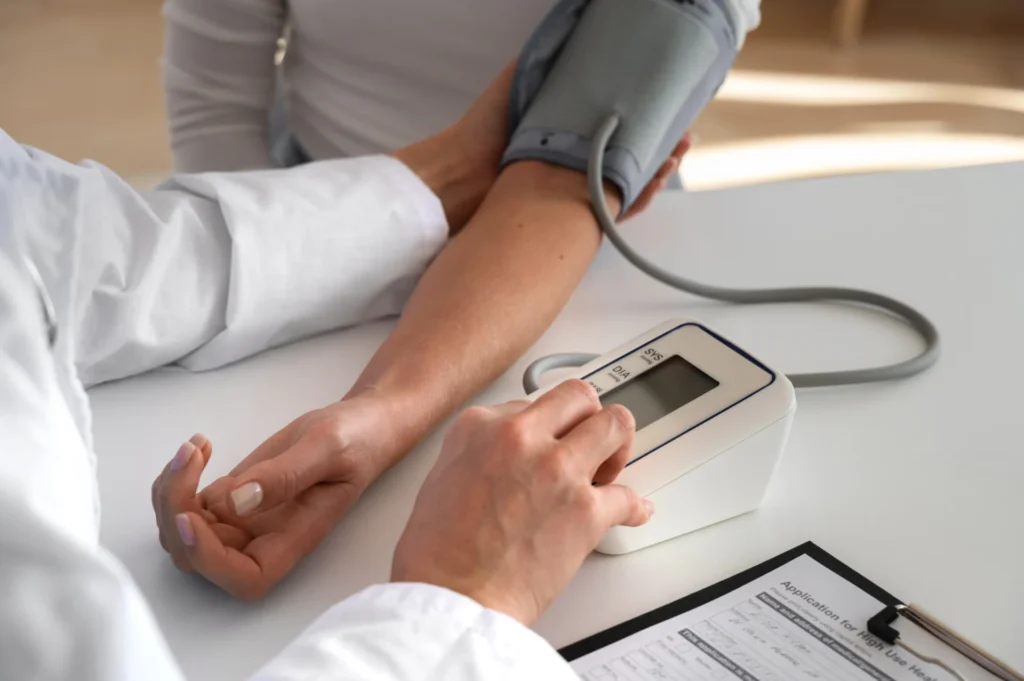Cervical decompression is a specialized treatment aimed at relieving pressure on the cervical spine (neck region) to reduce pain and improve function. At Prestige Health & Wellness in New York, we offer expert cervical decompression therapy to help patients alleviate neck pain, recover from injuries, and enhance overall spinal health.
What is Cervical Decompression?
Cervical decompression is a therapeutic technique designed to alleviate pressure on the spinal discs and nerves in the neck. It is often used to treat conditions such as herniated discs, degenerative disc disease, and spinal stenosis, which can lead to pain, numbness, and limited mobility in the neck, shoulders, and arms.
- Causes for Treatment: Herniated discs, spinal stenosis, nerve compression, or degenerative disc disease.
- Symptoms Addressed: Neck pain, radiating pain into the arms, tingling, and muscle weakness.
- Diagnosis: Diagnosis typically involves clinical evaluation, imaging (such as MRI or CT scans), and tests to assess nerve function and spinal health.
How Cervical Decompression Works
Cervical decompression works by gently stretching the spine, which relieves pressure on the discs and nerves in the cervical area. This decompression creates negative pressure within the disc, allowing bulging or herniated discs to retract and reduce nerve impingement. It also helps increase blood flow to the affected area, promoting healing and reducing inflammation.
- Techniques Used: Non-surgical spinal decompression therapy, traction therapy, and manual cervical decompression.
- Goals: Relieve nerve pressure, reduce disc herniation, alleviate pain, and improve neck mobility.
Integrating Physical Therapy with Cervical Decompression
At Prestige Health & Wellness, we often combine physical therapy with cervical decompression to enhance treatment outcomes. Physical therapy focuses on strengthening the muscles that support the cervical spine, improving posture, and restoring the normal range of motion. By integrating physical therapy exercises with decompression, we help patients achieve long-term relief and prevent future issues.
Physical therapy complements cervical decompression by:
- Strengthening Supporting Muscles: Exercises targeting the neck and upper back muscles help stabilize the spine and reduce the risk of re-injury.
- Improving Flexibility: Stretching exercises maintain and improve neck flexibility, which is crucial after decompression therapy.
- Posture Correction: Physical therapy helps patients adopt healthier postures, reducing strain on the cervical spine and preventing further compression.
Cervical Decompression vs. Other Neck Pain Treatments
Cervical decompression is often compared to other neck pain treatments like medication, chiropractic adjustments, or surgery. While medications may provide temporary relief, cervical decompression targets the underlying cause of pain by addressing the compression itself. Unlike surgery, decompression is a non-invasive method with minimal risks and a quicker recovery time.
- Medication: Addresses symptoms but does not treat the root cause.
- Cervical Decompression: Targets nerve and disc compression, providing longer-lasting relief.
- Chiropractic Adjustments: Can be used in combination with decompression to realign the spine and support healing.
Effective Treatments with Cervical Decompression
Non-Surgical Spinal Decompression
One of the most common cervical decompression techniques is non-surgical spinal decompression. This method involves the use of a specialized traction table that gently stretches the neck to relieve pressure on the spinal discs. This is a highly effective treatment for patients suffering from herniated discs or spinal stenosis, as it allows the discs to retract and take pressure off the nerves.
Traction Therapy
Traction therapy is another effective method for cervical decompression. It involves the application of a controlled pulling force to the neck, which creates space between the vertebrae and alleviates pressure on the spinal discs and nerves. This technique can be manual or mechanical, depending on the patient’s condition and needs.
Manual Cervical Decompression
For some patients, manual cervical decompression performed by a skilled therapist is the preferred approach. During this treatment, the therapist applies gentle pressure and traction to the neck, carefully adjusting the spine to relieve tension and compression in the affected areas.
Benefits of Cervical Decompression
Cervical decompression offers numerous benefits for patients suffering from chronic neck pain, nerve impingement, or disc-related issues. Some of the key benefits include:
Tips for Maintaining Neck Health at Home
- Neck Stretches: Incorporate gentle neck stretches into your daily routine to relieve tension and improve flexibility.
- Posture Awareness: Pay attention to your posture, especially when sitting at a desk or using electronic devices, to avoid putting strain on your cervical spine.
- Ergonomics: Set up an ergonomic workstation to support proper alignment and prevent neck strain.
When to Seek Professional Help
If you are experiencing persistent neck pain, radiating pain in your arms, or limited mobility, it may be time to seek professional help. At Prestige Health & Wellness, we offer personalized evaluations to determine if cervical decompression is the right treatment for you. Our team of experts combines cervical decompression with physical therapy and other modalities to create a customized treatment plan that addresses your unique needs.
Conclusion
Cervical decompression is an effective, non-invasive treatment option for patients dealing with neck pain, disc issues, or nerve compression. By gently relieving pressure on the spinal discs and nerves, this therapy promotes long-term healing and pain relief. If you’re struggling with neck pain or related conditions, schedule a consultation at Prestige Health & Wellness to explore how cervical decompression, combined with physical therapy, can help you achieve lasting relief and recovery.




